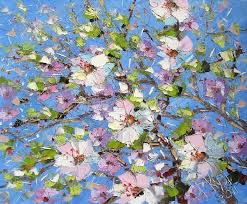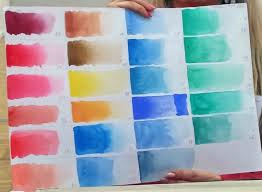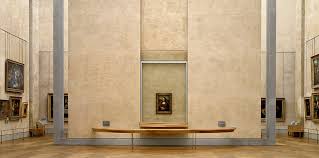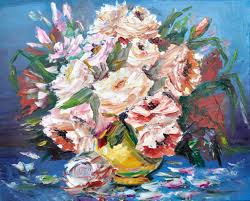EXCURSION TO THE WORLD OF PAINTING (part 2)
 By depicting reality on a two-dimensional plane, painting creates the illusion of three-dimensionality and volume: people and objects appear to be at different distances from the viewer — some closer, others farther, and nature depicts a current that sky seems to stretch to the horizon. For example, in a relatively small picture by I. Levitan “Vladimirka” the road is perceived as infinity.
By depicting reality on a two-dimensional plane, painting creates the illusion of three-dimensionality and volume: people and objects appear to be at different distances from the viewer — some closer, others farther, and nature depicts a current that sky seems to stretch to the horizon. For example, in a relatively small picture by I. Levitan “Vladimirka” the road is perceived as infinity.
The impression of depth is achieved using the law of perspective. A linear perspective makes it possible to build the apparent outlines of objects, and an aerial perspective – a change in color and shape. Thanks to chiaroscuro, an illusion of volume, bulge is created. Chiaroscuro is formed by a subtle and accurate combination of the illuminated and unlit side of the objects depicted in the picture. Leonardo da Vinci wrote: “If you, a poet, are able to tell and describe the phenomena of forms, the painter will make it so that they seem animated thanks to chiaroscuro.” The black-and-white principle, according to Leonardo, is determined by the fact that “the shadows of bodies should not be involved in any color other than the color of the body on which they lie.”
But, of course, the pictorial truth of painting is not reduced to achieving the most accurate, comprehensive and detailed similarity of the image with real reality. A truly realistic artistic image is always somewhat arbitrary, and this not only does not detract, but increases the credibility of the image. Conventionality of painting increases in monochrome graphics, linear drawing.
In order to expand the scope of the picture in static paintings, the artist depicts the phenomena of life that are of interest to him from an angle that allows him to discover important and significant aspects of the character of the people depicted, searches for a sharp plot, creates a deeply meaningful composition.
Painting is divided into monumental and easel. Monumental painting is associated with architecture – this is a painting of the facades of buildings, walls, ceilings, etc. These are, as a rule, large-sized works related to the purpose of architectural structures. Easel consists of those works that are of independent importance, regardless of where they will be exhibited – museums, cultural centers or private apartments. Easel painting is not connected with architecture.
The concept of “monumental” is used exclusively to designate a type of art, and not to express monumentality, that is, the significance of the ideas expressed by it, and in this regard, easel painting is no less monumental. Both monumental and easel painting should be equally distinguished by high ideas and significant artistic qualities. We find it artificial to contrast the easel and monumental painting in terms of their greater or lesser social significance and modern sound. Monumental painting, like the monumental art of sculpture, will occupy an increasingly significant place in the spiritual life of our society. And this is due not only to the nature of modern urban development, but also to the whole system of social development under socialism. However, the increasing role of monumental art does not mean diminishing the importance of easel painting, which is able to express both the large-scale problems of society and the most subtle emotional experiences of man. It should be noted that the recognition or derogation of the role of easel painting in one way or another is associated with the affirmation or denial of the originality of ideology and realism in the visual arts.
The main genres of painting are a thematic picture (historical, battle, everyday, or, otherwise, genre), portrait, landscape, still life, etc. Thematic or plot painting takes a leading place in Soviet painting. Portrait is a genre in which not only (and not even so much) an external resemblance is conveyed, but the inner essence of the person being portrayed is revealed. In a good portrait, a person is sometimes even more like himself than in life, because the artist often makes clear what was most secret to the person portrayed. In the landscape, a certain human condition is expressed through the image of nature. This is true for both the epic and the lyrical landscape. Each of them spiritually enriches, fosters a sense of beauty in a person. Widely embracing the phenomena of life, painting appears as a combination of all its genres, including still-life, animalistic, etc.




